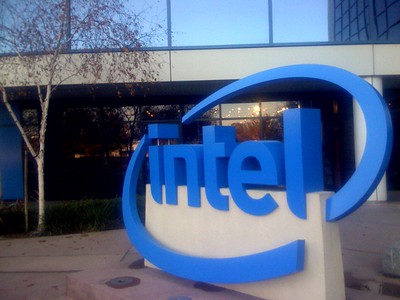|
|
|
Tuesday, March 31st, 2020

The chatter about how AI will change the world, take your job, out-consult the consultants, displace management, perform reviews, identify potential criminals and reoffenders, diagnose illnesses, etc., especially etc., is never ending.
AI is supposed to bring true objectivity to its many applications creating longed for change.
Yet it’s been proven over and over that AI contains the same biases that created our unfair, prejudiced world; not just in the US, but around the world.
AI is good at increasing bias in the name of efficiency and objectivity.
It is even better at automating the loss of privacy and increasing surveillance in the name of safety.
Long before AI got hot Lou Gerstner knew the solution.
Computers are magnificent tools for the realization of our dreams, but no machine can replace the human spark of spirit, compassion, love, and understanding.
Something tech has forgotten in its love affair with data and its warped view of progress.
And, of course, profit.
Image credit: safwat sayed
Posted in Communication, Culture | No Comments »
Tuesday, March 17th, 2020

A couple of years ago I wrote
A corporation isn’t an entity at all. It’s a group of people, with shared values, all moving in the same direction, united in a shared vision and their efforts to reach a common goal.
Lou Gerstner, who remade the culture at IBM, most famously said,
I came to see, in my time at IBM, that culture isn’t just one aspect of the game, it is the game.
The culture continued to change when Sam Palmisano took over.
…the biggest breakthroughs are a result of changing the business model and the processes and the culture.
Microsoft’s Steve Ballmer learned the hard way that culture can’t be changed by edict, whereas Satya Nadella’s approach succeeded.
Over the last year, 110,000 strong Intel has been changing under the leadership of Robert Swan, who considers the cultural change necessary for its survival.
Its culture badly needed an overhaul, and its 110,000 employees needed to confront issues more openly.
“If you have a problem, put it on the table,” said Mr. Swan, 59, who was promoted to the top job a year ago and has since embarked on a campaign to shake up the Silicon Valley giant.
His efforts remain a work in progress. But the changes — some of which lean on the precepts of Andrew S. Grove, the former Intel chief executive who coined the credo “Only the paranoid survive” — are Intel’s biggest attitude adjustment in decades.
The underlying cause is the same as Gerstner and Nadella faced at their companies: complacency.
Complacency, from years of dominating their markets, and silos, from internal distrust and myopic communications.
Intel was the same.
Intel also had deeply rooted problems reflecting its years of dominance, Mr. Swan said. Managers, complacent about competition, battled internally over budgets. Some of them hoarded information, he said.
These are the same problems that companies of all sizes face.
No matter how dominant times change and competitors can seize the day.
While success is often seen as a case of “us” vs. “them” it’s crucial to remember that “us” includes customers, partners and all parts of the company.
Image credit: Aaron Fulkerson
Posted in Culture | No Comments »
Monday, March 16th, 2020

Poking through 14+ years of posts I find information that’s as useful now as when it was written.
Golden Oldies is a collection of the most relevant and timeless posts during that time.
Focus on culture isn’t new, but it used to be a lot more positive. These days I see more about toxic cultures than about good ones, but what hasn’t changed is culture’s effect on performance, productivity and staffing. For better or worse, culture is still the most potent factor for any company.
Read other Golden Oldies here.
Shawn Parr, whose company works with large corporations, such as Starbucks and MTV, on innovation wrote a meaty post called Culture Eats Strategy For Lunch.
It reminded me of something I wrote back in 2008, because the title is from a quote by Dick Clark, CEO of Merk and after rereading it I decided it’s worth reposting, so here it is.
Culture Trumps All
A post on Dave Brock’s blog led me to an article at IMD’s site called “An Unpopular Corporate Culture” and, as Dave said, it’s a must read for anyone who still thinks that corporate culture is some ephemeral concept with no real impact that consultants use to sell their services.
And a double-must for those who talk about culture’s importance, but don’t walk very well when it comes to creating a great corporate culture.
For those who prefer to put their faith in plans and strategy, hear the words of Dick Clark when he took over as CEO of Merck in 2005 and was asked about his strategy for restoring the pharmaceutical company to its former glory. “His strategy, he said, was to put strategy second and focus on changing the company’s insular, academic culture.” The fact is, culture eats strategy for lunch,” Clark explained. “You can have a good strategy in place, but if you don’t have the culture and the enabling systems that allow you to successfully implement it… the culture of the organization will defeat the strategy.””
If you’re looking for a best practice corporate culture silver bullet forget it—one size doesn’t fit all.
Rex Tillerson, CEO of ExxonMobil, describes that company’s top-down command and control culture of consistency and discipline as “the source of our competitive advantage,” and has made it a priority to reinforce it.
Meanwhile, Robert Iger and Steve Jobs, in their discussions about the acquisition of Pixar by Disney, have been concerned with avoiding an Exxon style command and control culture. Jobs says that, “Most of the time that Bob and I have spent talking about this hasn’t been about economics, it’s been about preserving the Pixar culture because we all know that’s the thing that’s going to determine the success here in the long run.””
It took Lou Gerstner a decade to remake IBM.
The key lesson Gerstner learned in his time with IBM, as he later reflected, was the importance of culture.”Until I came to IBM, I probably would have told you that culture was just one among several important elements in any organization’s makeup and success—along with vision, strategy, marketing, financials, and the like… I came to see, in my time at IBM, that culture isn’t just one aspect of the game—it is the game.”
The article is more than just additional proof for my favorite hobby horse.
The analysis of the role of employee complaints/negativity play in culture and the importance of what to keep when setting out to change a culture as opposed to what to jettison will give you new insight on your own company’s culture.
In case you still doubt the power and value of culture I hope that Dick Clark, Rex Tillerson, Robert Iger, Steve Jobs and Lou Gerstner combined with the articles in Fast Company and IMD have finally changed your mind.
Flickr image credit: Bengt Nyman
Posted in Culture, Golden Oldies, Motivation, Retention, Role Models | No Comments »
Monday, October 14th, 2019

Poking through 13+ years of posts I find information that’s as useful now as when it was written.
Golden Oldies is a collection of the most relevant and timeless posts during that time.
CEOs screwing up their company culture isn’t new. And, one way or another, CEO ego is usually the cause; what differs is what they do now vs. then. Before, it was rotten decisions based on dinosaurian mindsets coupled with a god complex. Now the screw-ups tend to be grounded in rotten decisions based on hard-to-believe immaturity coupled with a god complex.
Read other Golden Oldies here.
Edicts by Steve Ballmer and tweets by David Sacks do not a culture change.
Changing culture doesn’t happen overnight and takes a lot of damn hard work.
But it can be done.
And for CEOs willing to take the time and do the work, the payoff is ginormous to the 10th power and goes well beyond money — for the company, the employees, stakeholders and last, but certainly not least, for themselves.
Just ask Satya Nadella or Lou Gerstner, who turned around IBM and said it best.
“I came to see, in my time at IBM, that culture isn’t just one aspect of the game—it is the game.”
On a funny, or should I say ironic, side note.
As I looked through past posts and articles I realized how similar in name Nadella is to his complete cultural and managerial opposite, [Robert] Nardelli.
Separated by two letters and a mental chasm that dwarfs the Grand Canyon.
Flickr image credit: jphilipg
Posted in Culture, Golden Oldies | No Comments »
Monday, September 25th, 2017
It’s amazing to me, but looking back over more than a decade of writing I find posts that still impress, with information that is as useful now as when it was written.
Golden Oldies are a collection of what I consider some of the best posts during that time.
Everybody pretty much agrees that the culture of tech companies need to change. (The focus used to be on Wall Street. It never changed, but the focus did and tech is the new, very visible poster boy of bad culture.) It’s also agreed that changing a company’s culture isn’t simple — and it certainly isn’t done by proclamation.
Read other Golden Oldies here.
 I’ve written many times about the importance of breaking down both horizontal and vertical silos (for more click the silo tag), but I don’t believe it can be done with an edict—even if that edict comes from Steve Ballmer. I’ve written many times about the importance of breaking down both horizontal and vertical silos (for more click the silo tag), but I don’t believe it can be done with an edict—even if that edict comes from Steve Ballmer.
This is especially true at a company like Microsoft, where the silos were intentionally built decades ago as part of the corporate structure.
Vertical silos, by nature, create, at the least, rivalry, but, more often, an “us against them” mentality within each silo.
For thousands of Microsofties, that’s the only cultural world they have known; many of them grew up in it, both in terms of years and promotions.
Changing culture is recognized as the most difficult organizational change any company, no matter the size, can undertake.
And one of the greatest error’s a CEO makes is thinking that all he needs on board is his senior staff the rest of people will fall in line.
For most companies, let alone one the size of Microsoft, terminating managers and workers that don’t fall in line isn’t even an option, since there is no way to replace them.
Yet having large numbers of your workforce on different cultural pages is a recipe for disaster.
The results of Ballmer’s changes will unfold over the next couple of years—in spite of Wall Street’s quarterly focus.
Changing culture is tremendously difficult; Charlie Brown didn’t pull it off at AT&T; Lou Gerstner said it was the most difficult part of turning around IBM.
Do you think Ballmer will succeed?
Image credit: Tobyotter
Editorial note: The answer was ‘no’ and Ballmer left Microsoft 6 months later.
Posted in Change, Culture, Golden Oldies | No Comments »
Tuesday, June 7th, 2016

Edicts by Steve Ballmer and tweets by David Sacks do not a culture change.
Changing culture doesn’t happen overnight and takes a lot of damn hard work.
But it can be done.
And for CEOs willing to take the time and do the work, the payoff is ginormous to the 10th power and goes well beyond money — for the company, the employees, stakeholders and last, but certainly not least, for themselves.
Just ask Satya Nadella or Lou Gerstner, who turned around IBM and said it best.
“I came to see, in my time at IBM, that culture isn’t just one aspect of the game—it is the game.”
On a funny, or should I say ironic, side note.
As I looked through past posts and articles I realized how similar in name Nadella is to his complete cultural and managerial opposite, [Robert] Nardelli.
Separated by two letters and a mental chasm that dwarfs the Grand Canyon.
Flickr image credit: jphilipg
Posted in Change, Culture, Ducks In A Row | No Comments »
Tuesday, December 2nd, 2014

What separates success and failure for new CEOs?
Some crash and burn, like Robert Nardelli and Apple retail chief Ron Johnson when he moved to Penney.
Others flourish.
Since becoming CEO at Microsoft, Satya Nadella has made revolutionary changes in both products and culture that would/could never have happened under the old regime and the stock is up 53%.
The world said that Apple under Tim Cook would be mediocre or even fail; it was assumed that no one could follow Steve Jobs. But in the three years April since Cook took the reins Apple split 7:1 and more than doubled its stock price.
What do these pairs have in common?
Culture.
Nardelli and Johnson were both outsiders who lacked interest or understanding of the existing culture. Both tried to use brute force to radically overhaul the existing culture and both failed miserably.
Nadella and Cook were both insiders; Cook was with Apple 13 years, while Nadella had 24 at Microsoft, and so far both are succeeding brilliantly.
Does this mean CEO jobs should always go to insiders?
Absolutely not.
Does it mean that changing the culture is a bad idea?
Absolutely not.
Lou Gerstner was an outsider who radically changed the culture at IBM.
And he sums the lesson up best.
“I came to see, in my time at IBM, that culture isn’t just one aspect of the game—it is the game.”
Flickr image credit: Jeffrey
Posted in Culture, Ducks In A Row | No Comments »
Tuesday, March 25th, 2014

Lou Gerstner (IBM) says it best, “I came to see, in my time at IBM, that culture isn’t just one aspect of the game—it is the game.”
Dick Clark (Merk), Rex Tillerson (ExxonMobil), Robert Iger (Disney) and Steve Jobs (Pixar) all agree, as do a host of other bosses.
There’s no getting around it—everything comes down to culture.
The millions of dollars spent developing strategy provide no value unless the strategy is implemented.
“I wouldn’t say that their strategies are useless, but if they added a separate ‘people’ process on the strategy process they would be a lot more effective.” That process is execution, which many consultants and academics have largely ignored because it is seen as merely tedious detail.
Culture embodies more than a company’s values; it embodies the company’s ability to execute.
Too many bosses treat building culture also as tedious detail—exciting to visualize and discuss, but procrastinating the hard work required to create and sustain it.
Bosses who ignore the tedious details jeopardize their careers and put their companies at risk.
Flickr image credit: Max Klingensmith
Posted in Culture, Ducks In A Row | No Comments »
Tuesday, July 16th, 2013
 I’ve written many times about the importance of breaking down both horizontal and vertical silos (for more click the silo tag), but I don’t believe it can be done with an edict—even if that edict comes from Steve Ballmer. I’ve written many times about the importance of breaking down both horizontal and vertical silos (for more click the silo tag), but I don’t believe it can be done with an edict—even if that edict comes from Steve Ballmer.
This is especially true at a company like Microsoft, where the silos were intentionally built decades ago as part of the corporate structure.
Vertical silos, by nature, create, at the least, rivalry, but, more often, an “us against them” mentality within each silo.
For thousands of Microsofties, that’s the only cultural world they have known; many of them grew up in it, both in terms of years and promotions.
Changing culture is recognized as the most difficult organizational change any company, no matter the size, can undertake.
And one of the greatest error’s a CEO makes is thinking that all he needs on board is his senior staff the rest of people will fall in line.
For most companies, let alone one the size of Microsoft, terminating managers and workers that don’t fall in line isn’t even an option, since there is no way to replace them.
Yet having large numbers of your workforce on different cultural pages is a recipe for disaster.
The results of Ballmer’s changes will unfold over the next couple of years—in spite of Wall Street’s quarterly focus.
Changing culture is tremendously difficult; Charlie Brown didn’t pull it off at AT&T; Lou Gerstner said it was the most difficult part of turning around IBM.
Do you think Ballmer will succeed?
Flickr image credit: Tobyotter
Posted in Change, Culture, Ducks In A Row | 4 Comments »
Tuesday, February 26th, 2013
 How would you feel as a member of a highly respected, world-class organization to hear it described as follows, not by a competitor, but based on an internal investigation. How would you feel as a member of a highly respected, world-class organization to hear it described as follows, not by a competitor, but based on an internal investigation.
In all, the documents painted a picture of a highly dysfunctional, top-heavy organization divided into discrete, rival factions, and weighed down by mistrust, poor communication, buck-passing and internecine squabbling.
The article refers to the BBC, but could just as well be describing any on of hundreds of companies ranging from Fortune 50 to tiny mom & pop businesses.
In most cases it happens when bosses takes their eyes off the cultural ball and make seriously erroneous assumptions, such as these,
- Once culture is set it doesn’t change.
- Culture takes care of itself, i.e., it’s self-sustaining
- People will follow my lead, so I don’t need to be culturally proactive.
- What culture?
Toxic culture kills everything in its path, including, eventually, the company itself—IBM nearly died of it.
As Lou Gerstner said, “I came to see, in my time at IBM, that culture isn’t just one aspect of the game—it is the game,” and he’s not the only CEO to feel that way.
The BBC is just one of the latest in a long line to be brought low by a bad culture.
Flickr image credit: Keven Law
Posted in Culture, Ducks In A Row | No Comments »
|
 Subscribe to
Subscribe to
MAPping Company Success
About Miki 
Clarify your exec summary, website, etc.
Have a quick question or just want to chat? Feel free to write or call me at 360.335.8054
The 12 Ingredients of a Fillable Req
CheatSheet for InterviewERS
CheatSheet for InterviewEEs™
Give your mind a rest. Here are 4 quick ways to get rid of kinks, break a logjam or juice your creativity!
Creative mousing
Bubblewrap!
Animal innovation
Brain teaser
The latest disaster is here at home; donate to the East Coast recovery efforts now!
Text REDCROSS to 90999 to make a $10 donation or call 00.733.2767. $10 really really does make a difference and you'll never miss it.
And always donate what you can whenever you can
The following accept cash and in-kind donations: Doctors Without Borders, UNICEF, Red Cross, World Food Program, Save the Children
*/
?>About Miki
About KG
Clarify your exec summary, website, marketing collateral, etc.
Have a question or just want to chat @ no cost? Feel free to write
Download useful assistance now.
Entrepreneurs face difficulties that are hard for most people to imagine, let alone understand. You can find anonymous help and connections that do understand at 7 cups of tea.
Crises never end.
$10 really does make a difference and you’ll never miss it,
while $10 a month has exponential power.
Always donate what you can whenever you can.
The following accept cash and in-kind donations:
|








 I’ve written many times about the importance of
I’ve written many times about the importance of 


 How would you feel as a member of a
How would you feel as a member of a 
